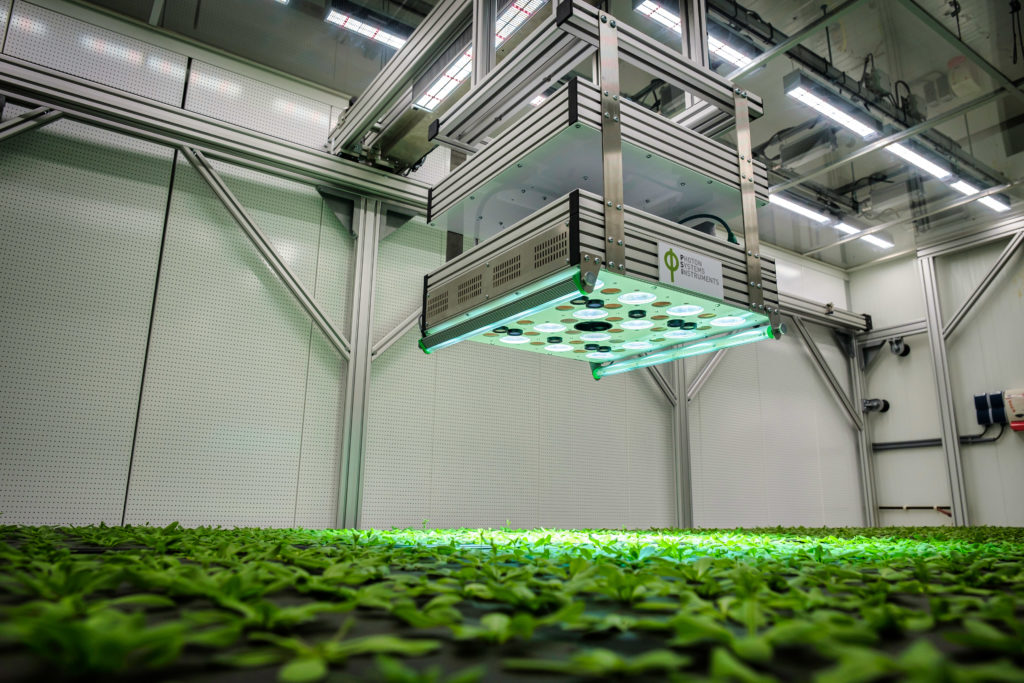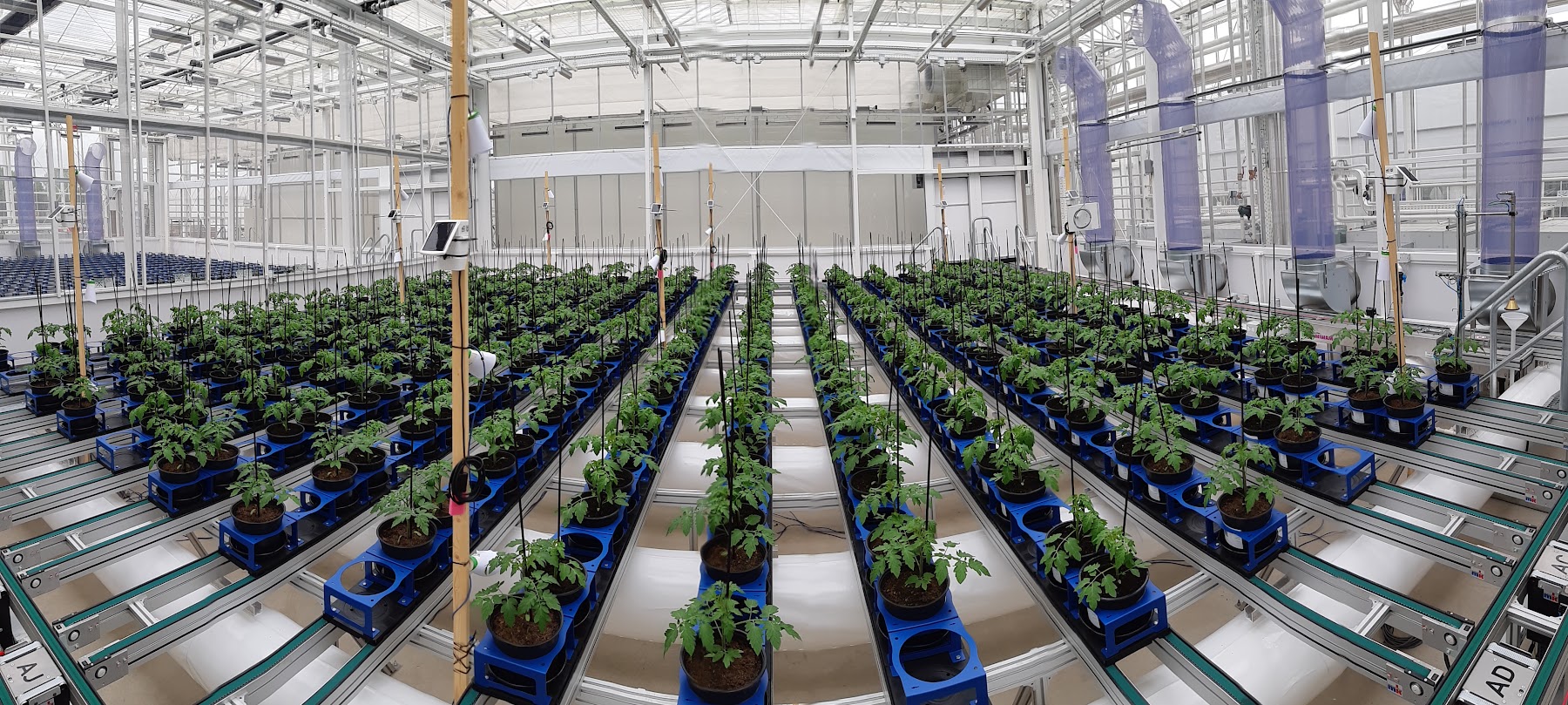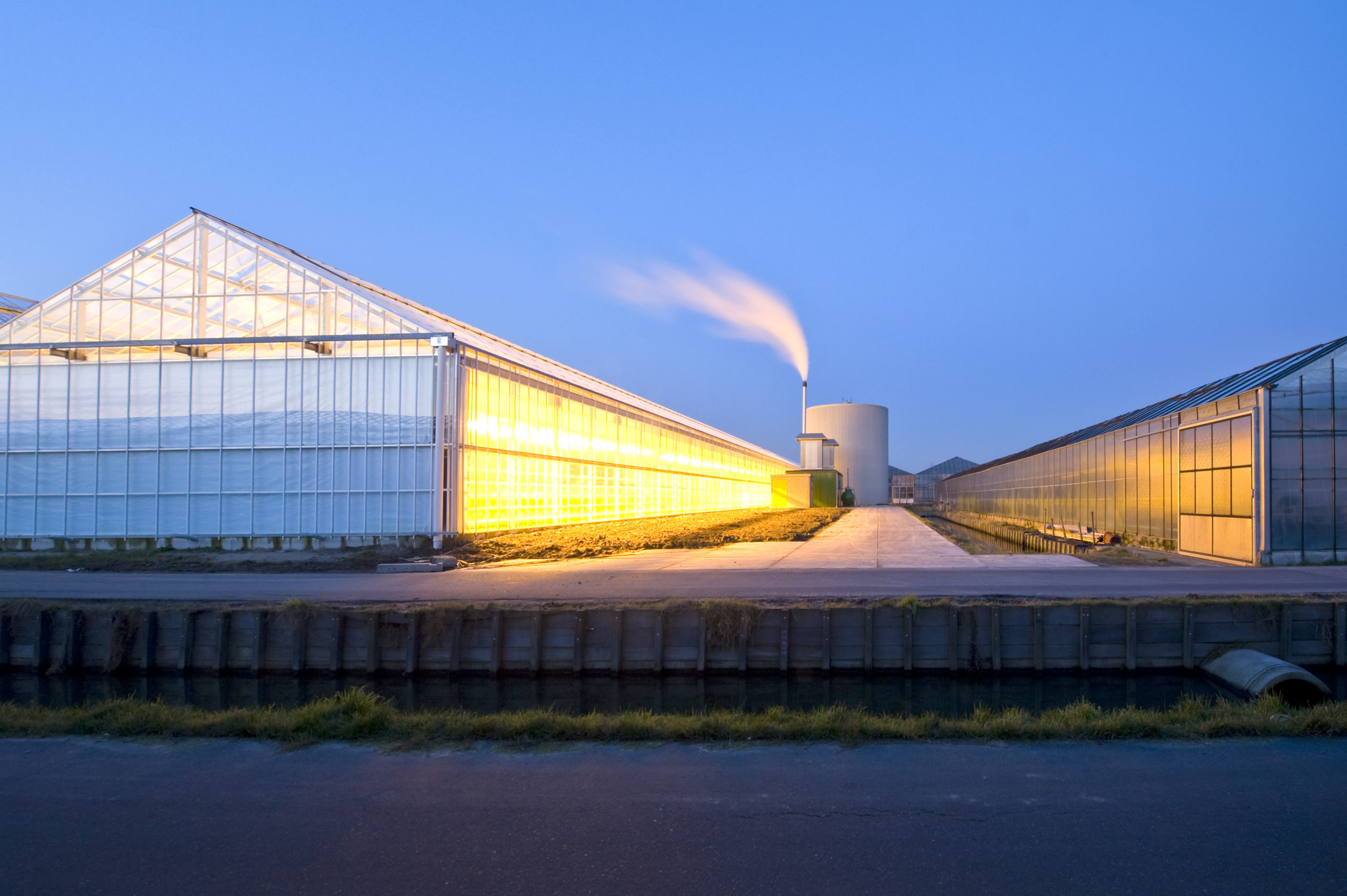With the completion of NPEC at the end of this month, plant research enters a new era. The era of automation and a lot of data.
NPEC stands for Netherlands Plant Eco-phenotyping Centre. The focus here is not the plant’s genetic baggage – its genotype – but its outward appearance, or phenotype. The research entails measuring aspects of the plant’s appearance and the influence of the environment. And what NPEC offers in terms of technology is downright phenomenal, says professor of Genetics Mark Aarts, chair of the Board of NPEC. ‘Genetics is no longer a limitation for research these days. Nowadays we can determine genotypes very quickly and cheaply. What we need now is to understand what those DNA sequences do. Why is lettuce with this genotype different from lettuce with that genotype? How do the environment and climate influence that? NPEC offers the facilities to measure all that. I am a geneticist and for me the possibilities this opens up are fantastic. Really super.’
Here you can measure characteristics that the human eye doesn’t see
Of course, scientists have always measured how crops react to a certain treatment, disease or stress, says Rick van de Zedde, the project leader for the development and construction of NPEC in Wageningen. ‘But until now these sorts of experiment required a lot of manual work. The scale of testing was limited by the number of plants a person could analyse in a day. PhD students therefore spent weeks on intensive manual work, whereas they have better things to do with their valuable time. NPEC gives researchers equipment with which they can conduct standardized analyses of plants on a large scale, and build datasets. All with the help of robots, sensors, automation and camera systems; in the greenhouse and climate cells as well as in the field. This is a global trend.’
Photo model
NPEC is a collaboration between WUR and Utrecht University (see inset: Ecotron). The facilities are spread across both campuses. There is not much activity yet in the NPEC greenhouse behind Radix, where Van de Zedde proudly shows off the equipment. There are two sections to the greenhouse. In one section, the plants are moved on conveyor belts towards cabinets full of measuring systems. In the other section, the plants stand still and the measuring systems move. In both cases, the measuring is fully automated. ‘Here we measure the architecture of the plant,’ says Van de Zedde, pointing to a large white box. In the cabinet, the plants are captured from all sides by 15 cameras as if they were photo models. ‘A 3D image of the plant is then constructed from these images. We developed the software for doing that ourselves. This is a Wageningen invention, which you won’t find anywhere else in the world.’
We can simulate a sunny day in Southern Europe or a night frost in the Netherlands
Each of the camera systems in the ‘photo lane’ has its own focus. Van de Zedde: ‘That one was developed together with One Planet, and makes hyperspectral images, capturing not just visible light but also ultraviolet and infrared. This lets you detect early symptoms of disease or drought stress. Here you can measure characteristics that the human eye cannot see’. The third and final room in the lane focuses on photosynthesis. ‘So that can meet the need for data at the planned photosynthesis institute that is coming to the campus. Photosynthesis is one of the spearhead topics at NPEC.’ A trial is underway in the ‘stationary’ part of the greenhouse. Various grass varieties are being exposed to drought. ‘We are looking to see which variety will survive the longest,’ Van de Zedde explains. ‘We are doing a very controlled analysis of what happens to the plants’ weight when they slowly go into a kind of drought stress. The plants are each placed on a scale that is so accurate that the plants mustn’t move. By this method, you can measure evaporation very precisely. This kind of research is very important to NPEC. Everyone can see that climate change is causing problems. When it is bone dry and extremely hot, our standard crops have a hard time in the fields. It would be great if we could find more robust plants at NPEC. Not just grasses, but also crops like tomatoes, cucumbers or quinoa.’
Non-stop measurements

There is the same focus on photosynthesis in the greenhouse in the climate chambers in another NPEC building just down the road, opposite Unifarm. The chambers are greenhouses in themselves, just on a small scale. The difference is that not a single ray of sunlight penetrates into them. The light in the chambers is artificial and fully controlled. Van de Zedde: ‘That means that we control the climate here. We can simulate a sunny day in Southern Europe, or a night frost in the Netherlands.’ The climate chambers are specifically equipped to measure photosynthesis, says Professor Aarts. ‘Much better than anything we’ve had before, we are delighted with them. One of the chambers has a light ceiling with various cameras and other sensors that enable us to continuously measure various characteristics of photosynthesis in all the plants simultaneously, on a time scale of milliseconds. We are particularly curious about the response of plants to rapid variations in light intensity.’
NPEC marks the start of Plant Sciences 2.0, Aarts is quite sure. ‘No doubt about it. Automating so many aspects opens up new possibilities. You can measure at any time of day or night, and in a consistent way. People can’t do that, it’s not sustainable. NPEC offers the possibility to measure what happens from seed germination to flowering and to continue measuring plants beyond that.’
Ecotron
One of NPEC’s eye-catchers on the Utrecht campus is the Ecotrons. There are no fewer than 32 of them set up in different halls in the new black premises next-door to the Kruyt building. They are beautifully designed capsules of more than a man’s height. A team is hard at work getting them all installed and tested.
You could describe Ecotrons somewhat irreverently as fancy covered flower pots. ‘They offer the researcher an option in between the field experiment and the standard pot experiment in the lab,’ explains professor of Ecology and Biodiversity George Kowalchuk. ‘The field gives you the real interactions of the plant with the environment, but you don’t control the conditions. It is too cold, too dry or there might be a pest. To avoid all that, you can do pot tests in a climate chamber, for example. That is useful, but it’s not a realistic simulation of the real world. Ecotrons fill the gap between the two. The plants grow in a closed system on real soil with sufficient mass and depth and under realistic and controlled conditions. Even the suction effect of the soil can be simulated’.
As the plants grow, various measurements and samples can be taken. Kowalchuk: ‘One of the research questions, for example, is how much carbon plants fix and where that carbon goes. About 40 per cent of it is excreted through the roots, thereby feeding the soil life in the rhizosphere, the environment that interacts with the roots. That soil life, with its pattern of micro-organisms, varies per species and even per cultivar. Because an Ecotron is a closed system, you can use isotope analysis to determine when and in which organism carbon is deposited. In this way we can map the interaction between the plant and the soil.’
Besides the Ecotrons, NPEC in Utrecht also houses a battery of advanced climate chambers in which very diverse conditions can be created, and a module dedicated to the interaction between plants and micro-organisms. ‘There you can very precisely analyse the interaction of plants with micro-organisms both above and below ground. For example, you can see how the phenotype of a plant changes after interaction with micro-organisms.’

 In the first section of the NPEC greenhouse on the Wageningen campus, the plants are moved on conveyor belts towards cabinets full of measuring systems. Photo Guy Ackermans
In the first section of the NPEC greenhouse on the Wageningen campus, the plants are moved on conveyor belts towards cabinets full of measuring systems. Photo Guy Ackermans 